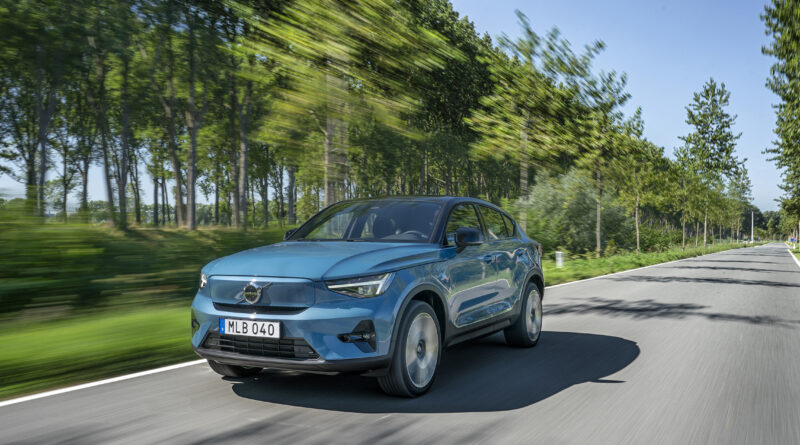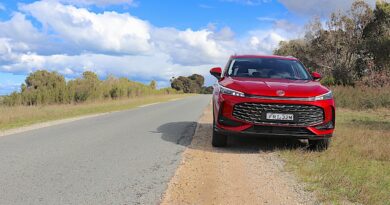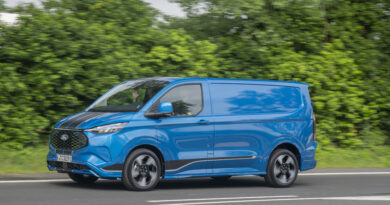2022 Volvo C40 Recharge Twin review
There’s a lot that’s familiar about Volvo’s first-ever electric-only car, the new C40 Recharge. It’s simply a fastback version of the existing XC40 Recharge Pure Electric compact SUV, a closer relative to the Polestar 2 it shares its architecture with.
Some will think the C40 Recharge looks more sleek and stylish than the XC40, but most who drive it will notice that it’s also less practical and useful. More on this later…
Though the C40 Recharge isn’t innovative, Volvo sees this niche model as an opportunity to signal its future direction. The Swedish brand could have chosen to also do it with ICE and hybrid powertrains, just like the XC40. Instead Volvo decided to produce it only with pure battery power, a move which emphasises its plan to become a 100 percent EV car maker by 2030.
The C40 Recharge will arrive in Australia sometime in 2022, when production begins in the same Chinese factory that already builds the XC40 Recharge Pure Electric. The C40 Recharge is already on sale in Europe, but cars for those markets are made in Belgium.
While Volvo Australia is still working on pricing and specification decisions, a look at how the C40 Recharge compares to the XC40 Recharge in Europe gives some strong pointers.
In Italy, for example, the C40 Recharge Twin – the only variant on sale so far – is priced between the two dual-motor XC40 Recharge Twin models on sale there.
If it’s positioned similarly in Australia, this means the C40 Recharge Twin should be very close to the $77,000 price of the XC40 Recharge in Australia, with a similarly high level of standard equipment.
Volvo Australia will almost certainly aim to price the C40 Recharge below the $78,000 cut-off point for EV rebates and incentives in NSW.
We sampled the C40 Recharge at its European press presentation in Belgium. Volvo is launching it there in dual-motor Twin form. Expect single-motor versions to be added to the line-up at a later date.
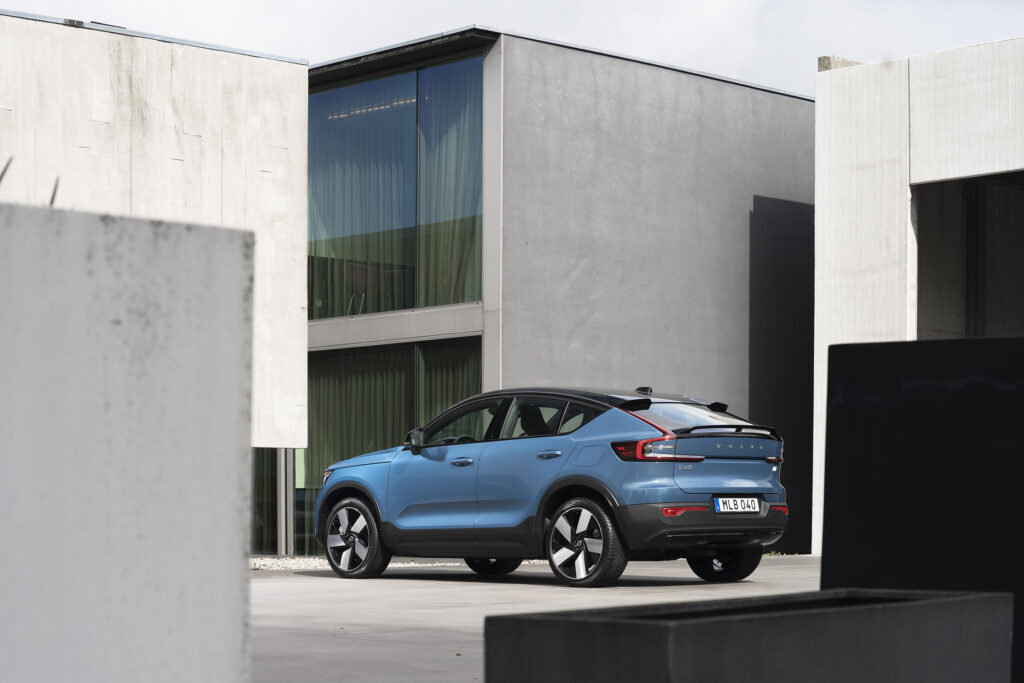
Design
With its curving roofline, the C40 Recharge is around 50mm lower than the XC40 Recharge. This change reduces its frontal area and aerodynamic drag a little, which should slightly reduce energy consumption and boost driving range.
The designers in Volvo’s Gothenburg studio changed more than just the rear panels and tailgate of the XC40 Recharge to create the C40 Recharge. It also has a new-look front bumper and grille and different headlights (including an 84-pixel LED option). In Europe a fixed panoramic glass roof is standard.
Though the C40 Recharge is high and hefty, it’s also one of the more handsome coupe-style SUVs around. Sturdy but shapely, you could say.
The five-seat interior is mostly the same as the XC40, which is a good thing. The look is unmistakably Scandinavian; uncluttered, thoughtfully arranged and intuitive to use. It’s also completely leather-free. Currently the seat coverings are made from synthetic material Volvo calls Nordico, but a natural wool option is coming in 2022.
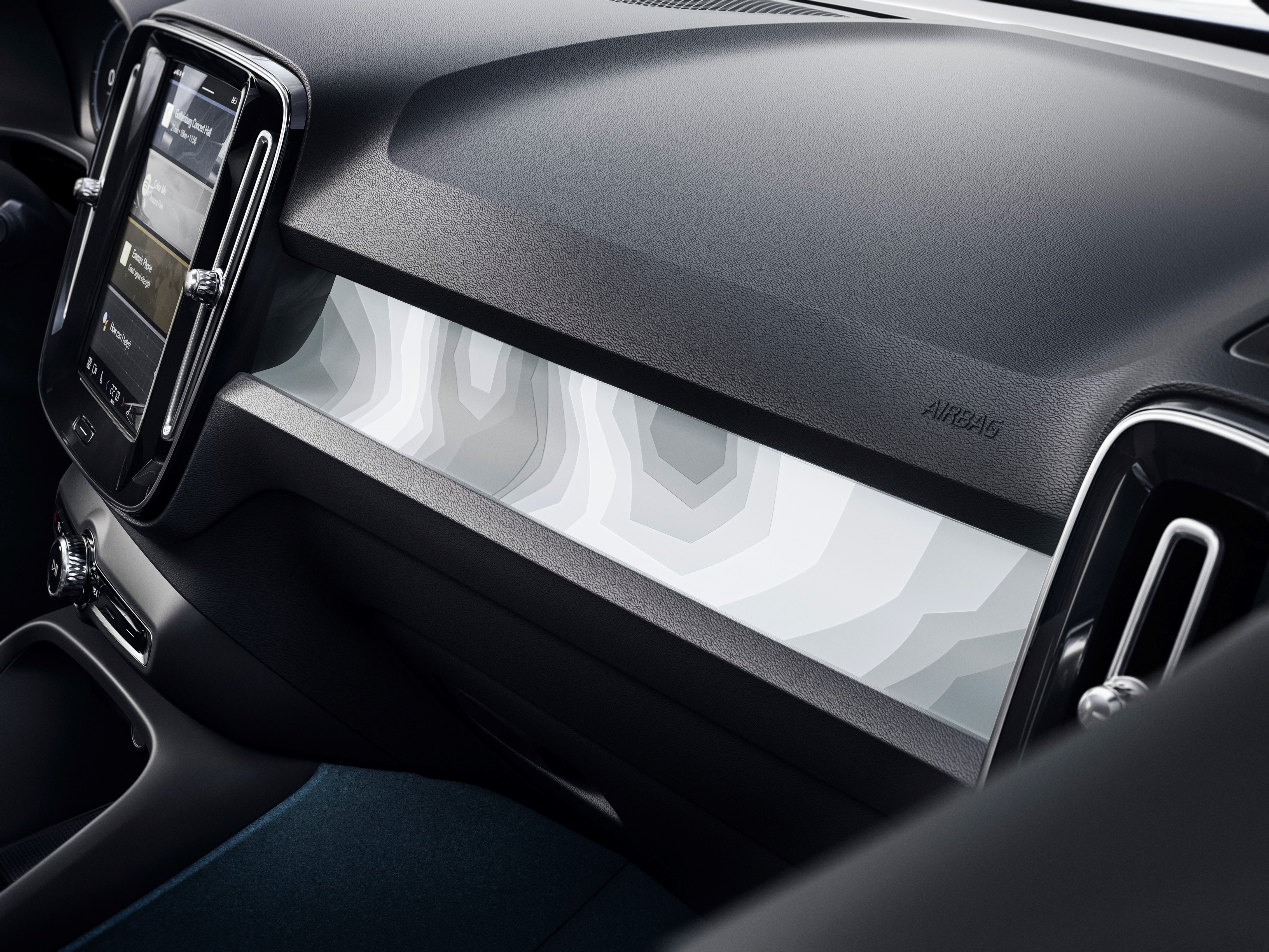
There are a couple of subtle touches to set the C40 Recharge apart. Coolest of these is the instrument panel insert ahead of the front seat passenger. It looks like an opaque piece of plastic in bright light. In dim light it begins to gently glow, revealing a pattern that looks like the lines seen on a topographic map.
The resemblance is no coincidence. An outdoorsy Volvo designer came up with the idea of using a map of the mountainous Abisko National Park in the deep-frozen north of Sweden as a design feature in the C40 Recharge.
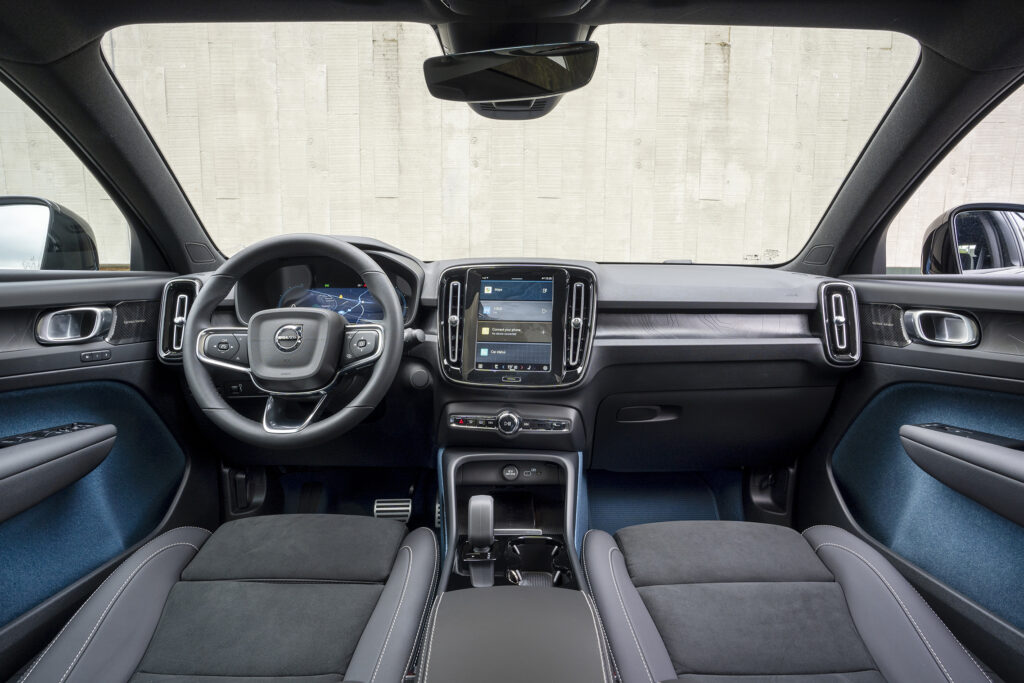
Interior space and amenities
Despite that diving roofline, there’s ample headroom in the C40 Recharge’s rear seat. Even those around 185cm tall will have clearance between hair and headlining.
But because the Volvo’s CMA platform is a compromise, designed to also serve as a basis for models with ICE and hybrid and powertrains, there’s a hump in the floor to make space for the driveshafts and exhaust pipes they need.
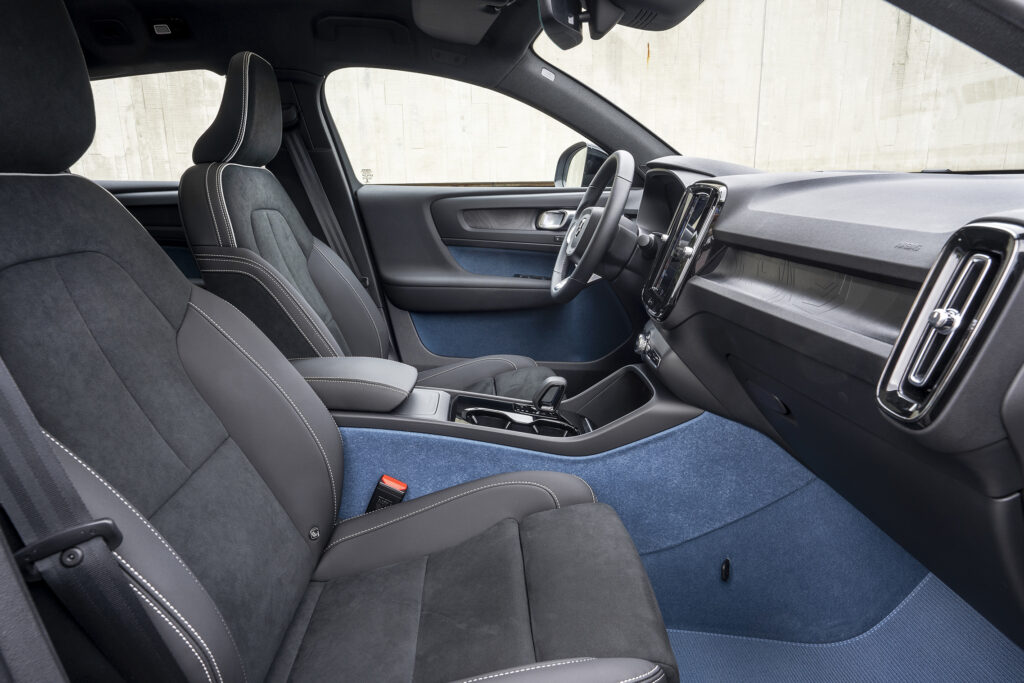
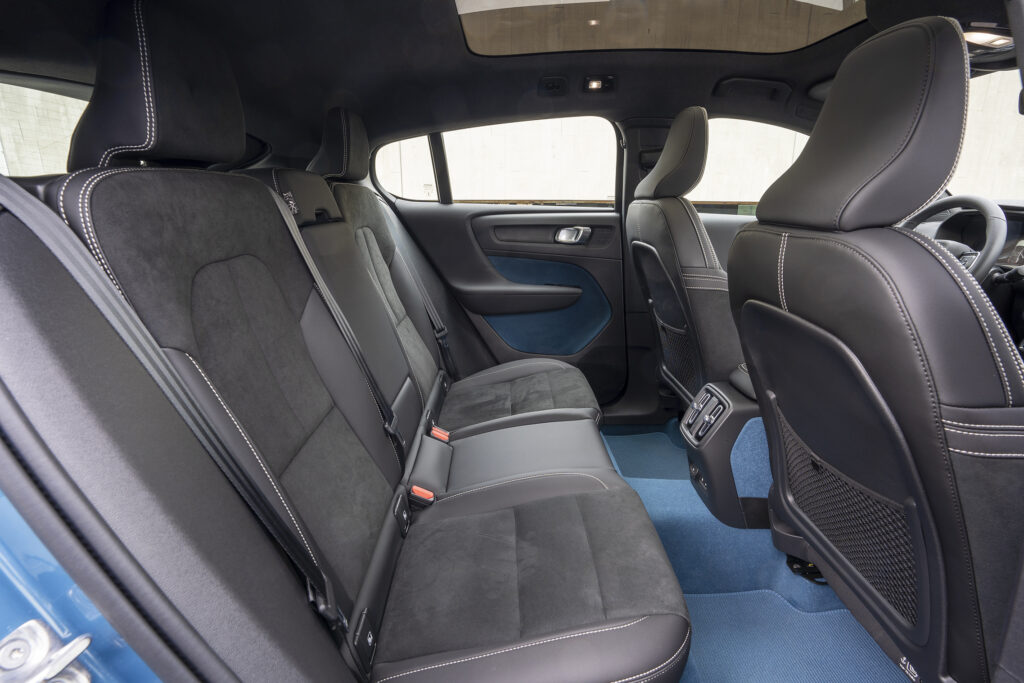
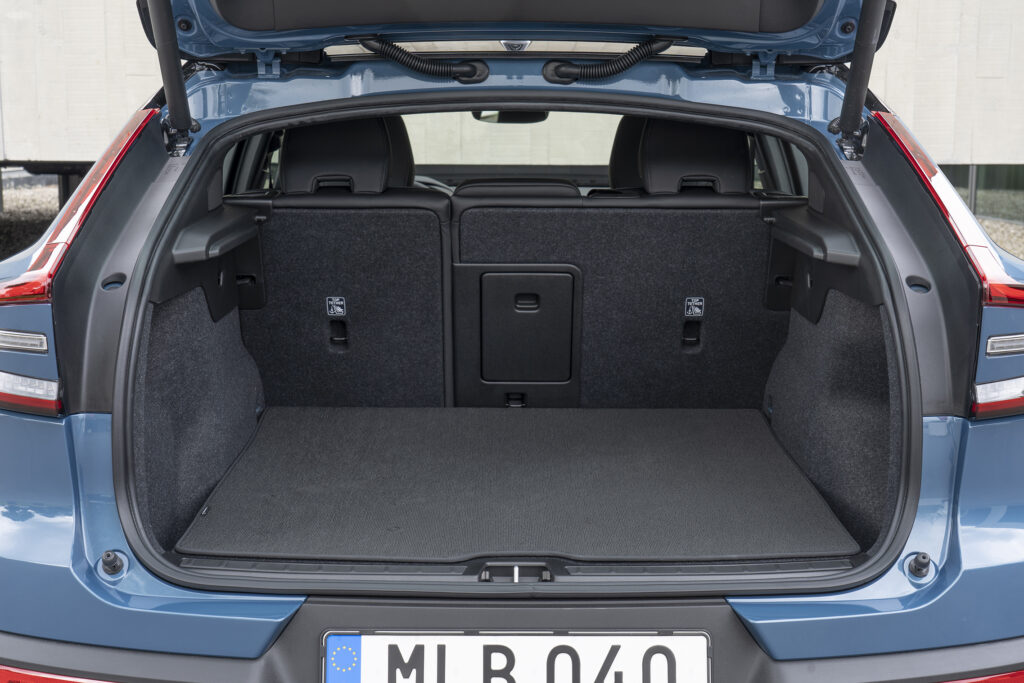
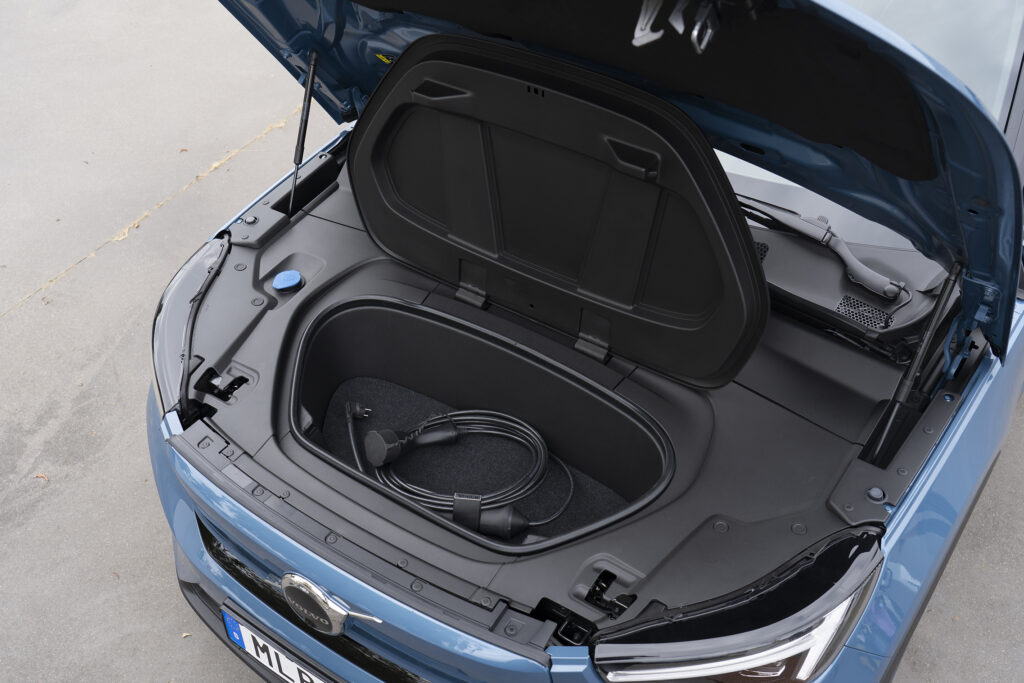
Space under the luggage compartment’s cover is 413 litres, only fractionally less than in the XC40 Recharge. The difference is much more when the split-folding rear seat is flipped forward for maximum cargo capacity.
Up front the C40 Recharge is as roomy and comfortable as the XC40 Recharge. As is typical in Volvos, the front seats are a great combination of comfort and support.
Centrepiece of the instrument panel is a crisp portrait-oriented touchscreen, with a single row of physical switches beneath. Like the XC40 Recharge, the C40 Recharge infotainment system runs on the Android Automotive operating system.
While easy and familiar to use, in EV Central’s experience Android Automotive isn’t totally reliable. In both Volvo and Polestar (both brands are owned by Chinese car maker Geely) EVs we’ve had occasional problems with the Google Maps-based satnav, playing radio stations and more.
The cabin does have plenty of useful storage, including bigger-than-average door pockets, and is carefully assembled from quality materials.
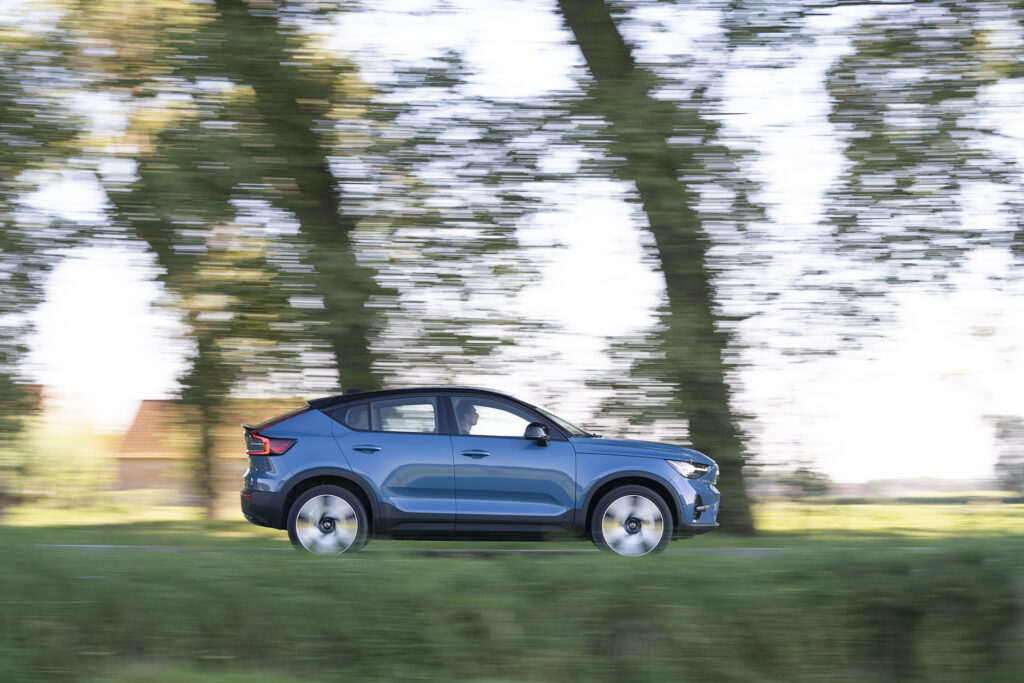
Performance and efficiency
The C40 Recharge shares its motors and battery pack with the XC40 Recharge. So there’s are 150kW/330Nm synchronous permanent magnet motors driving each axle and enough lithium-ion cells to store a usable 75kWh of energy.
Though Volvo claims the C40 Recharge is fractionally faster 0-100km/h than the XC40 Recharge, the difference isn’t enough to be noticeable. And this EV is sports car quick. Aided by all-wheel-drive traction, it really lunges off the line. There’s plenty of punch for overtaking, too, though few Australians are likely to discover that its top speed is capped at 180km/h.
But the Volvo’s energy efficiency isn’t great. Volvo engineers say the lower and more aerodynamic shape of the C40 Recharge gives it a measurably longer driving range than the 418km WLTP-rated XC40 Recharge. The C40 Recharge’s preliminary WLTP figure is 444km, which will translate to around 350km in mixed, real-world driving.
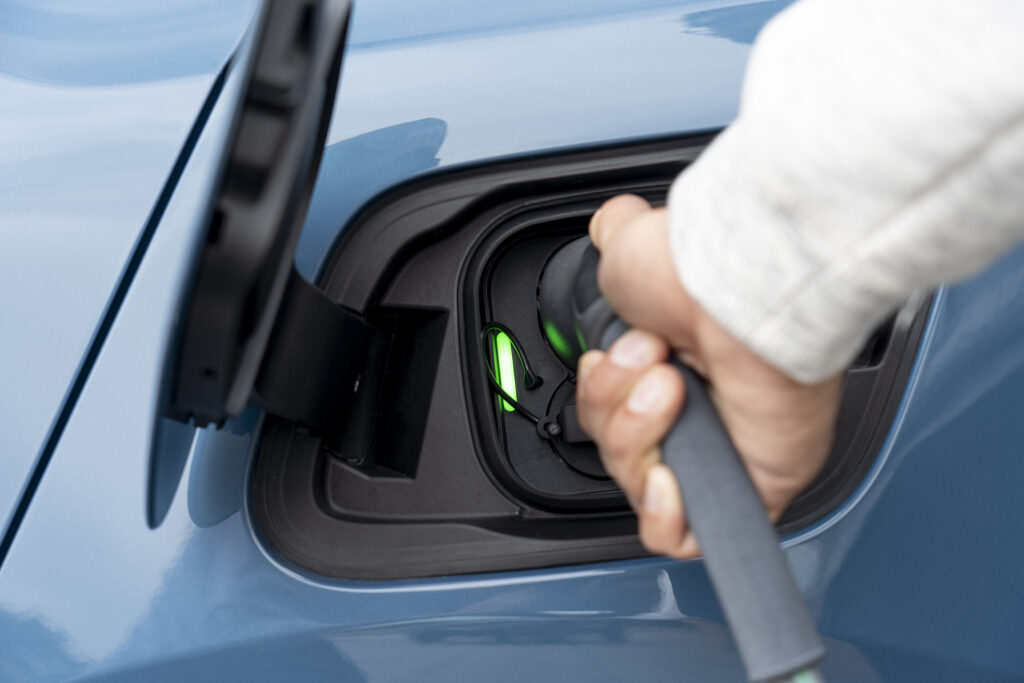
Charging
Mimicking the XC40 Recharge, the C40 Recharge is equipped with an 11kW on-board AC charger. It’s likewise able to accept up to 150kW from a DC fast charger. A CCS Combo plug port handles both AC and DC charging.
The experts at Europe’s EV Database estimate that a 150kW or higher DC fast charger will take the Volvo’s battery pack from 10 to 80 percent full in 33 minutes. At the C40 Recharge event in Belgium, Volvo engineers said they’re already working on OTA (over the air) software updates that will make DC charging even more speedy.
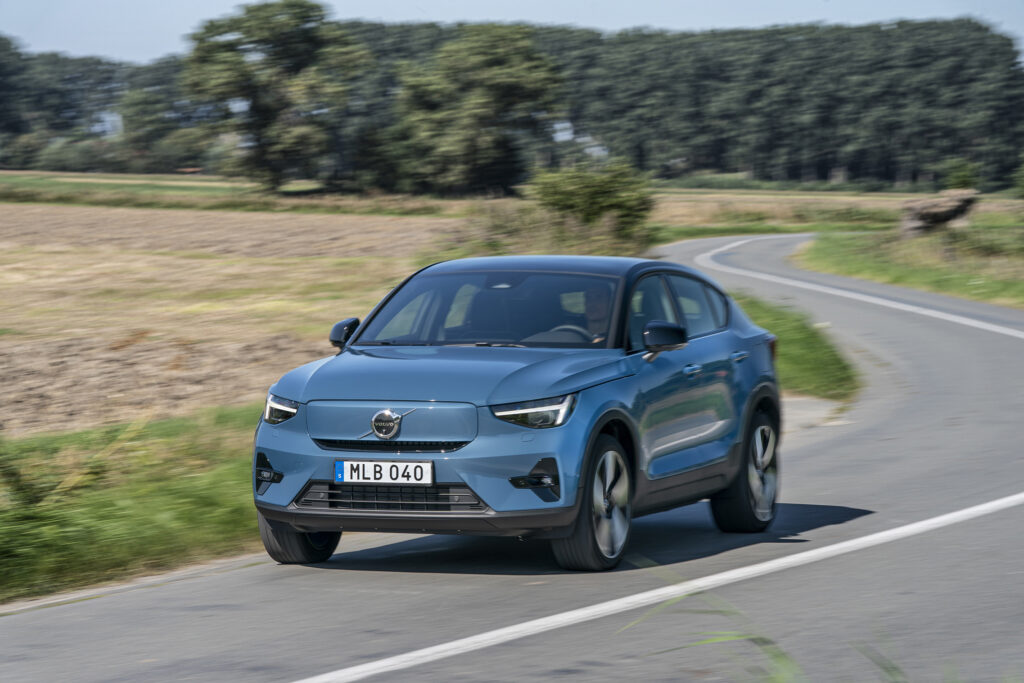
Driving the C40 Recharge Twin
Rearward vision in the Volvo is very poor. Checking the rear-view mirror is like looking through a letterbox slot, from a distance.
It’s one of those cars where a rear-view camera is an essential, not a luxury. Safety conscious Volvo naturally fits one as standard.
The rear vision problem is the price you pay for the C40 Recharge’s supposed stylishness. Aside from this, though, it drives very much like the other EVs based on the CMA platform jointly developed by Volvo and its owner Geely.
Though the C40 Recharge has performance galore, its handling talent isn’t so bountiful. The Volvo is high and, at around 2.2 tonnes, rather heavy. Though the engineers who developed its chassis have done their best, physics is physics…
The firm suspension of the C40 Recharge contain its body roll and make it reasonably responsive to steering inputs, but its weight strains the relationship between tyres and road. The electronic stability systems do a good job of keeping everything safe and tidy, but the Volvo isn’t going to thrill drivers who are keen on cornering.
The stiffness of the springs and shock absorbers isn’t likely to thrill passengers, either. The Volvo jiggles and pitches too much for comfort, even on smooth and well maintained Belgian roads.
Noise levels aren’t quite as low as they should be in a premium EV. Like some other CMA-based cars I’ve driven – several Polestar 2 variants – the C40 Recharge’s powertrain emits a low-volume whistly whine. It’s only really audible at lower speeds, so not a great concern, but there are other EVs in the same price-zone that are practically silent.
Volvo could also give the driver a little more choice with regenerative braking than the almost-none and too-much levels that can be selected via the vehicle set-up menu on the centre screen.
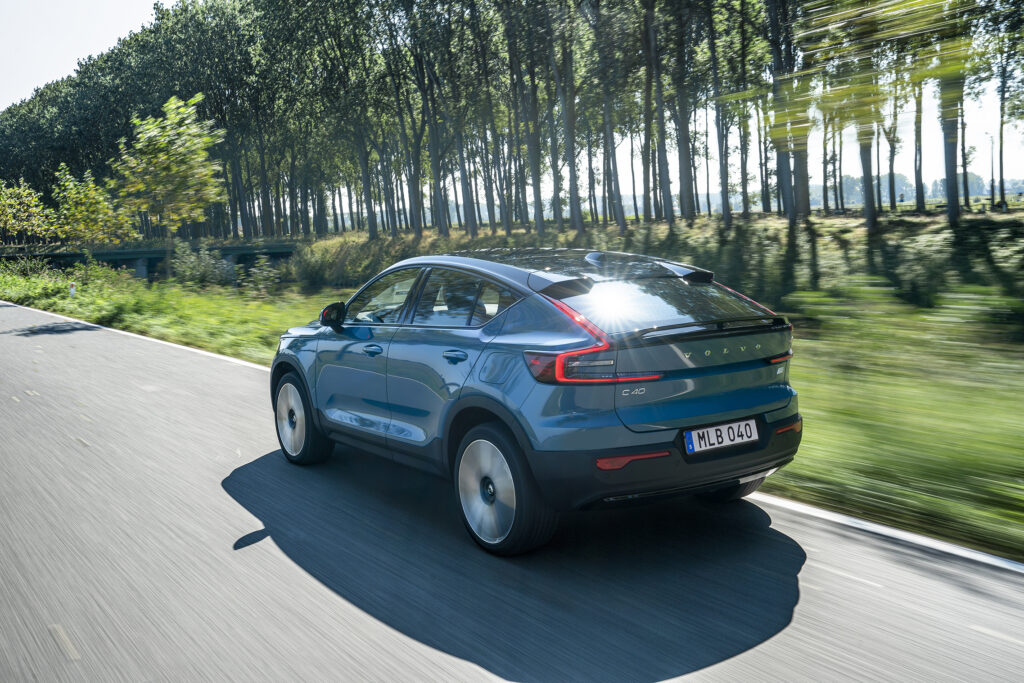
Wrap-up
The Volvo C40 Recharge is designed to appeal to those who value style more than practicality. On this level, it works pretty well; it’s certainly sleeker than the boxy but more useful XC40 Recharge.
But most people, we suspect, would find the XC40 Recharge easier to live with day-to-day, despite its fractionally shorter driving range.
The C40 Recharge might be the first electric-only Volvo, but the really exciting EVs from the Swedish brand are still under development, like the next-generation XC60 and XC90. They’ll be built on a purpose-designed platform, without the engineering compromises that make the C40 and XC40 Recharges okay rather than outstanding EVs.
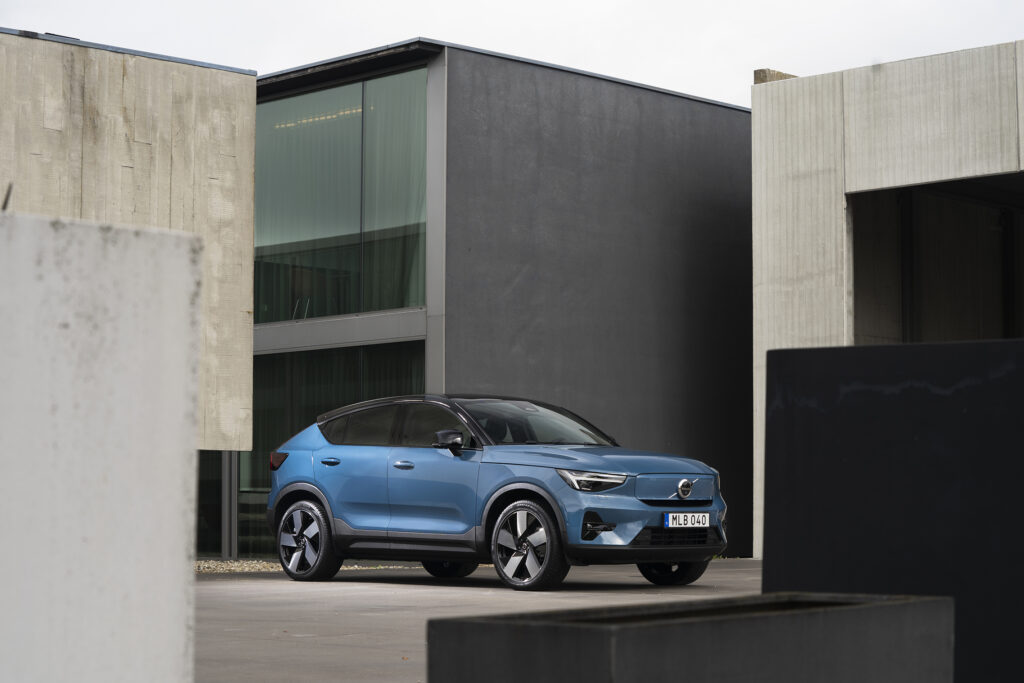
2022 Volvo C40 Recharge Twin specifications
Price: About $78,000
Basics: EV, 5 seats, 5 doors, compact crossover SUV coupe, AWD
Range: 444km WLTP, 350km real world range
Battery capacity: 75kWh
Battery warranty: 8 years/160,000km (guarantee of 70 percent of original battery capacity)
Energy consumption: 17.9kWh/100km WLTP
Motors: 1 rear, 150kW/330Nm; 1 front 150kW/330Nm (both synchronous permanent magnet); 330kW/660Nm combined
AC charging: 11kW, Type 2 plug
DC charging: 150kW, CCS Combo plug
0-100km/h: 4.7 seconds (claimed)

